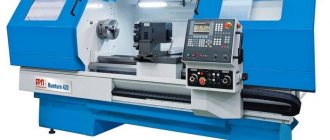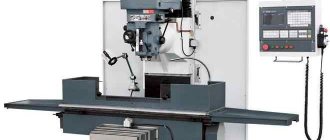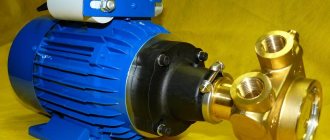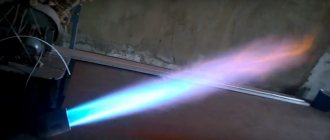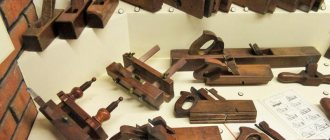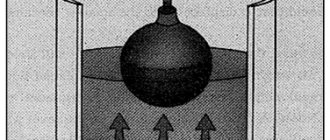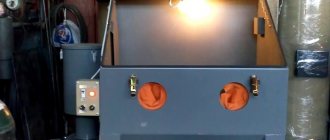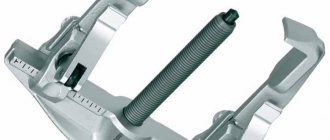Articles
All photos from the article
It is impossible to imagine modern woodworking without lathes; the operating principle of this equipment is simple: a workpiece is fixed in the structure, which is rotated by a mechanism, at which time you can give it any configuration using special cutters. We will look at the main features of the work process and tell you what devices are used in the work.
In the photo: compact desktop options are used for home use; they are much cheaper and take up less space
Studying the machine: types of turning equipment for woodworking
Turning equipment is represented by a huge arsenal. The most primitive models began to be produced more than two and a half thousand years ago, then they were gradually modified and improved. During the Soviet Union, hundreds of types of turning equipment designed for woodworking were produced.
The wide range of machine types is determined primarily by the variety of wooden products. It can be different in shape, size, type, and material. For example, one machine will be needed to process a large flat surface, while another machine will be more suitable for extracting decorative type holes. For home use, of course, they strive to purchase the most universal mechanism that would allow them to process everything at once. Often they choose a complex device that allows you to work not only on wood, but also on metal. But for industrial purposes, when it comes to processing parts in large numbers, but with a standardized form, they choose professional, powerful machines, but with limited functionality. When choosing, you should pay attention first of all to the purpose of the device, and only then find out its technical characteristics and think about how suitable they are for your purposes.
The scope of use of lathes is turning packaged, cylindrical and conical shapes of rotating bodies. Consequently, only the body that rotates on a special attached device in the structure is processed. It is possible to process internal and external parts - only the clamp and cutter used are changed. Also, with the help of modern wood lathes, it is possible to make holes and use them like drills, but only if the hole is located on the axis of the part or is slightly offset along its axis. In any case, the scope of application of the equipment is wide; modern variations can be used for almost all jobs.
Wood sawing machines are the most popular and frequently used variation. This mechanism is used for sawing whole logs and workpiece surfaces. Also used to give the required shape to flat parts. Sawing machines are divided into several large subgroups:
- Sawmills are a device for performing transverse or longitudinal cutting of workpieces. Linear saws are used that rotate translationally in relation to the workpieces. It is used mainly in industrial warehouses, and not in home workshops, as it is quite bulky and large. In addition, high energy consumption does not speak in its favor - the efficiency is low;
- Circular saws operate in both manual and automatic modes. They are necessary for careful sawing of wooden blanks on vertical and inclined planes. The parts are processed using specially fixed circular saws. Depending on the quality of the saws, their power and size, the scope of use of the equipment changes;
- Belt mechanisms are also controlled manually or automatically. Their advantage is that cutting the wood occurs with linear movements of the belt. The ability to be used not only for processing, but also for giving rough shape to workpieces. Processing with belt machines is quite economical, they do not take up much space and do not require special employee skills to operate.
Planing machines are the second type. They are used to remove the outer layer using tools. One-way mechanisms can only remove edges from fairly massive products, and they only affect the upper part. Double-sided, in turn, use the upper and lower parts of the workpiece. Unlike single-sided devices, these devices are more productive, but at the same time, the work will require knowledge from the machine operator; the devices are more difficult to maintain. The planing type includes the so-called jointing options, which are chamfered at the corners.
Direct lathes can be of various types and variations - depending on the dimensions, accuracy, and type of workpieces used.
But a common classification used in production is the degree of universality and automation. According to the last parameter, the equipment is divided into:
- manual - parts are fed independently, the spindle speed is varied using manual control;
- automated - processes are controlled by an employee, but thanks to copied mechanisms, time is reduced;
- automatic are the safest and fastest devices, since work occurs regardless of the person; CNC-controlled options are popular.
Types of cutters used for work
All work is carried out using special devices called cutters, they have a wide variety of configurations, and we will consider those that are most in demand and used most often:
| Reyer | This fixture has a semi-circular blade shape and is used for initial roughing, as well as for internal cavity removal and turning of concave shapes. The grooved configuration allows you to remove a fairly large layer of wood. The length can be up to 30 centimeters, and the width varies from 4 to 30 millimeters |
| Meysel | Another name for this element is a jamb, since its working surface is beveled, the blade is sharpened on both sides, and it is used for finishing. Also, this configuration allows you to grind convex fragments with the middle part and make flat surfaces perfectly smooth; an acute angle allows you to cut off parts and correct the ends, and a blunt angle allows you to make roundings |
| Scraper | This is the name of a chisel with a straight blade, sharpened on one side, with which you can carry out rough processing and make recesses with right angles, as well as align cylindrical elements |
| Hook | This device is very convenient for making recesses, as well as selecting internal cavities if they exist. |
| Double Angle Cutter | The flat tip has two bevels, thanks to which you can make very small protrusions, depressions, transitions at corners and much more. You can also cut off elements with this tool. |
Important! If you often make elements of the same configuration, then special shaped cutters may be useful for you, which have the desired profile in advance, which simplifies the work and improves its quality.
A shaped turning wood cutter can have almost any configuration
Types of turning: what techniques are used?
Turning is a vast field of knowledge. The specialist must choose not only the appropriate equipment, but also know the specifics of performing all the techniques. There are about a dozen main types of turning work, but it should be understood that each type of processing can concern parts of different diameters, sizes, and textures. Consequently, it is not possible to count exactly what types of turning and techniques there are. Main types of turning:
- processing of external surfaces of cylindrical shape;
- turning the outer surfaces of a conical sample;
- processing of ledges and ends of parts;
- processing the surfaces of cylinders and cubes from the inside;
- piece of workpiece;
- turning grooves and holes;
- drilling holes;
- work associated with drilling - reaming and countersinking of sides;
- cutting internal and external threads;
- processing of shaped planes;
- rolling corrugation and more.
As you can see from the list, there are many turning techniques. The worker must not only know them all thoroughly, but also be aware of the safety rules when turning or cutting certain workpieces.
What kind of cutters will be needed for the job?
There are about 15 types of cutters on a standard machine. Each of them is designed to perform a specific turning technique. You cannot use an unsuitable cutter that performs identical functions. This may give effective results, but will lead to equipment failure.
The cutters are the most important part of the mechanim. In manual and automated machines, they are replaced by a specialist with each stroke. The only exceptions are specialized options that can be configured so that the cutter is automatically changed to the required one a step or two ahead. This feature saves a lot of time. Automatic lathes change the cutter automatically, that is, without human intervention. This is very convenient, since there is no risk of injury, especially when testing functionality, and it also saves significant time and resources.
Specialized machines are equipped with several cutters, since they work with a specific shape and type of part. But universal ones are equipped with dozens of cutters with different sizes. In the largest versions there can be 15 varieties, all of different sizes. Kinds:
- straight cutter;
- thrust mechanism;
- bent through cutter;
- cut-off not passable;
- groove cutter;
- boring mechanism;
- countersink;
- drill;
- cutter for carving;
- scan;
- shaped option;
- tap;
- knurling.
Please note that the knurling cutters have a directional arrow indicating how the tooling moves when the workpiece rotates.
Workflow Features
If you are just mastering this type of wood processing, then it is important to follow all the recommendations that will be outlined below. The instructions for carrying out the work are not complicated, but in order to obtain high-quality products, some experience is required, so the most important factor is practice, only it will give you the necessary skills.
Preparation of the workpiece and its fastening
This stage is important, since it determines how well the processing will be carried out.
Regarding it, the following can be noted:
- First of all, you need to find elements of the required size; as for wood, for beginners the best option is linden, as it is very easy to process. Maple and birch can also be good solutions; it is not recommended to use harder species;
Most often, a linden block is used for blanks.
- The workpiece is secured using a chuck; it can be of different configurations; the simplest design is in the form of a trident that holds the wood. But this option is not always suitable, and other types of systems are used: faceplate, jaw chuck, sleeve version - it all depends on the manufacturing features of a particular product;
The jaw-mounted wood lathe is ideal for applications where the workpiece is only clamped on one side
- First of all, you need to find the center of the workpiece using a carpentry center finder; this device must be available if you are going to do turning work;
Finder squares are useful tools for a wide variety of carpentry work.
- Next, using a core, a recess is made in the center of the workpiece, after which it is placed between the chuck and the tailstock; the fastening should be such that the element can be rotated by hand without any problems;
- The last stage is to bring the tool rest to the workpiece; the element must be positioned so that when rotating the part does not cling to it, so before fixing it, check whether the element moves freely.
The working process
As for this part of the work, it includes the following operations:
- First, it is necessary to carry out rough processing using a reyer; it is best to do this at about 1000-1500 rpm; the more accurate the result is needed, the higher the rpm should be. The working part should rest on the tool rest and lightly touch the workpiece with its underside, then the handle is raised until the blade cuts into the surface and begins to remove well-curled chips;
You need to move from the headstock to the spindle, moving the support element as necessary
- After rough processing, you need to mark the workpiece using a pencil, the lines are marked by simply turning the element, they will show the boundaries of various elements and protrusions and will greatly simplify the process of turning products with your own hands;
- Next, processing is carried out using cutters of the desired configuration; the oblique option is most often used, since it can be used to produce elements of a wide variety of configurations. In this case, the speed should be high; the higher it is, the higher the quality of the surface;
Important! When working, observe safety precautions: fasten your sleeves to prevent them from twisting, and use safety glasses.
- It is important to constantly check the template; when a separate element matches, you can move on; for convenience, you can, having processed one half, turn the workpiece over to the other side. When the pattern matches completely, the main stage can be considered almost complete;
This is what the sequence of work looks like on the diagram
- Using the same oblique cutter, the ends are cut; in no case should this be done completely; leave a small area on which the element will be held;
- Then the supporting element is removed and sanded using sandpaper for wood, the work is simple: fold the sandpaper in half and carefully sand the surface in all areas;
- If desired, you can also apply impregnation or varnish directly on the spot; to do this, simply place a brush and turn the element by hand;
- The last stage is cutting off the remaining sections by blowing, all that remains is to remove the product.
Basic techniques for working with the machine
Techniques for working with a lathe are required. User safety directly depends on this. Important:
- check the serviceability of the mechanism before starting work, including the fastening of parts and shields;
- Lubricate the drive shaft and screws every time you use them;
- check the filling level;
- turn on at idle speed - check the lever, trigger, caliper, speed and gears;
- monitor the guide and bed;
- Avoid abrupt switching to reverse or switching the gearbox to another mode.
Be sure to clean the mechanism upon completion of work. Remove any remaining shavings and wipe with a cloth soaked in kerosene.
